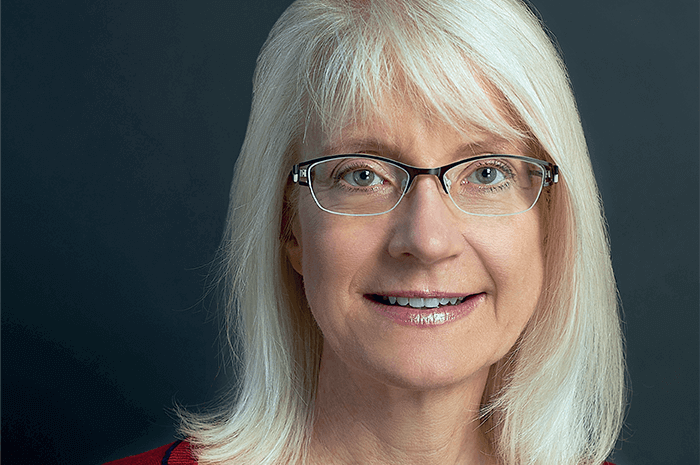How did you get into analytical science?
Math was always my best subject in high school – but science offered more options! Fortunately, I had enthusiastic teachers, so I had a good foundation for college. I majored in chemistry with a minor in math. Many of my friends were pre-med, but that was a no-go for me – I could not handle the blood and gore of surgery nor the frantic stream of patients as a physician. I was first captivated by analytical chemistry when I took an instrumental analysis class – the lab portion was a round robin in which students would partner up and rotate through different spectrometers and analytical methods each week. The unusual part: most weeks one of the partners had to donate urine to provide a “real sample” for the experiment. That sealed my interest in analytical science!
Interestingly, my undergraduate research project focused on isolation of natural products in plants, so it was on the fringe of analytical science – but I knew that pursuing more advanced analytical chemistry and focusing on the amazing field of mass spectrometry was my best path in graduate school.
When did you know you made the right career choice?
As soon as my first mass spectrometer arrived and was unpacked in the lab, I knew I would enjoy my first years as an assistant professor. But the real clincher was when a couple of brand-new grad students joined the lab and I witnessed first-hand how ideas can propagate and veer off in new directions.
Please share a little about your research group…
My group is excited about advancing mass spectrometry as an analytical tool through development of instrumentation and new methods. In particular, we have focused on developing ultraviolet photodissociation (UVPD) and expanding its applications to characterizing biological molecules. UVPD is a method of energizing ions through absorption of photons, which causes fragmentation.
The dissociation patterns produced by UVPD are chock-full of informative and unusual fragment ions; it creates a very rich molecular fingerprint. And that’s how we’ve been able to use UVPD to characterize big molecules like proteins (to pinpoint post-translational modifications) and small molecules, like lipids (to localize double bonds and other features). More recently, we have also started using UVPD to dissect multimeric protein complexes with the aim of understanding how proteins interact and assemble into functional complexes.
As for the Brodbelt Research group, well, it’s a diverse mix of mostly graduate students, one or two postdocs, and a small handful of undergraduates. Each person has a unique perspective and passion – whether it be analyzing lipids, or characterizing proteins, or modifying mass spectrometers, or developing new data analysis tools.
We collaborate extensively with bio-oriented groups, like those in biochemistry or molecular biology, to pursue more complex biological problems.
In short, I would say our special expertise is the analytical science of mass spectrometry, and we partner with biological scientists to gain their insight and expertise to increase the impact of our work.
What’s the most challenging experience of your career?
There are many challenges in an academic science career. One challenge is figuring out how to motivate others to achieve project goals and surpass expectations. Another ongoing challenge is the management of advanced instrumentation, which requires endless care, teamwork, lots of trouble-shooting, and consistent maintenance.
And the aspect you’re most proud of?
Mentoring. It is amazing to watch group-members (grad students, undergraduates, and post-docs), who have thrived in science and been incredibly innovative in the lab, taking scientific risks, jumping into new projects without a clear path ahead, and facing and clearing obstacles along the way. My group-members really drive the science and are the innovators. One example is my group’s effort to integrate lasers with mass spectrometers to enable photodissociation for MS/MS. There were many technical hurdles – fortunately, enthusiastic grad students were willing to lead this effort and make it successful. They were fearless!
Thinking about mass spectrometry as a whole, what has been the most important development over the past decade or so?
There are so many great options. I would say that the broader availability of high accuracy, high resolution, high mass analyzers has transformed the information we can harvest from mass spectra, and this accessibility has accelerated many areas of biological research.
Do you have any concerns for the mass spec field – particularly in terms of biological applications?
We have many more new users and new applications, but fewer people gaining expertise in the fundamentals of mass spectrometry and fewer trained in the design and hands-on building/modification of mass spectrometers. Many will argue about whether it is the biological questions that drive the mass spectrometry science or whether advances in mass spectrometry drive the biological questions – but it doesn’t really matter. We must continue cultivating interest in instrumentation and core knowledge in mass spectrometry to keep the field moving forward.
If you weren’t a scientist, what would you be doing instead?
I enjoy writing and the creative process, so maybe a novelist. I’d likely focus on mysteries and creepy melodramas; absolutely no slashers or sci-fi!





